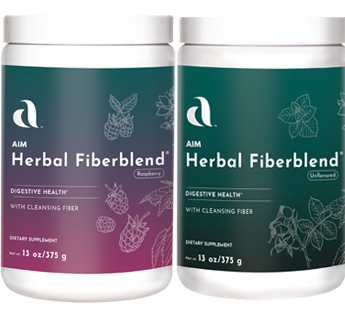 Herbal Fiberblend Herbal Fiberblend 
 Herbal Fiberblend Herbal Fiberblend  provides you approximately one-half
your daily fiber intake, plus the benefits of a variety of health
herbs. provides you approximately one-half
your daily fiber intake, plus the benefits of a variety of health
herbs.
Herbal Fiberblend is a mixture of fiber and herbs that has
been specially formulated for maximum contribution to the  daily diet. More than 20 years of research and testing went into
the development and perfection of Herbal Fiberblend. Why so
long?
daily diet. More than 20 years of research and testing went into
the development and perfection of Herbal Fiberblend. Why so
long?
It took years of experimenting to get the formula just right.
Many different herbs were used in different proportions until
the right mixture of fiber and herbs was found. As Dr.
Hagiwara tested hundred of plants before determining barley
was the best, so we tried numerous herbs and mixtures before
deterring the optimum mix. The result? A great product that
contributes to your good health.
Two tablespoons (18 grams) of Herbal Fiber Blend contain 12-
13 grams of fiber, and most nutritionists recommend 21-35
grams a day. And because psyllium is the main fiber source in
Herbal Fiberblend, most of the fiber in Herbal Fiberblend is
soluble fiber.
The herbs in Herbal Fiberblend contain combinations of
vitamins, minerals, and flavonoids that add up to 750 percent
of the DV for vitamin C, 2 percent of the DV for vitamin A (as
beta carotene), 13 percent of the DV for calcium, 4 percent of
the DV for iron, 8 percent of the DV for copper, and smaller
amounts of secinnamonveral other vitamins and minerals. What's more,
this two-tablespoon serving is only 12 calories. Herbal
Fiberblend comes in three flavors:cinnamon, raspberry, and
lemon.
Using  Herbal Fiberblend Herbal Fiberblend 
Since most people consume less fiber per day than is
recommended, you should start out with smaller one-teaspoon
(3 g) servings twice a day and gradually increase, over two
weeks, to the recommended serving. The recommended
serving size per day is based on weight:
Up to 150 pounds (68 kg) 1 tablespoon (9 gr)
150 - 200 pounds (68 - 90 kg) 1.5 tablespoons (14.5 g)
200 pounds or more ( 90 + kg) 2 tablespoons (18 g)
Children should start out with 0.5 (1.5 g) teaspoon a day and
gradually increase to 1 (3 g) teaspoon per day.
Remember that the more fiber you consume, the more water
you should consume. Try and drink eight glasses of water per
day while using Herbal Fiberblend. Finally, a few people,
notably heathcare providers who have been occupationally
exposed to psyllium dust, may develop a sensitivity to psyllium,
resulting in an allergic reaction. Pregnant or lactating women
should consult their health professional.
What's in  Herbal Fiberblend Herbal Fiberblend 
Alfalfa
Alfalfa is a source of chlorophyll, beta carotene, and minerals.
It is especially rich in minerals, as it pulls up nutrients from
root depths as great as 130 feet.
Black Walnut Hulls Juglans nigra
A large tree common to much of North America, the walnut
fruit contains magnesium, protein, calcium, phosphorous, iron,
iodine, and potassium, as well as essential fatty acids.
Cascara Sagrada Rhamnus purshiana
Europeans found cacara sagrada in North America and soon
shipped to Europe where it was used as a laxative. Cascara
sagrada's laxative property is due to the presence of
anthraquinones. These stimulate the intestinal contractions
which push the stool through the colon.
Hibiscus Flower Hibiscus sabdariffa L.
More than 300 species of hibiscus can be found around the
world, growing in both tropical and subtropical regions. H.
sabdariffa contains, among other substances, fiber, vitamin C,
and small amounts of niacin and iron.
Irish Moss Chondrus crispus
Actually a seaweed, this plant saved many poor Irish during the
potato famine of the mid-19th century. It contains 15 of the 18
elements composing the human body. It contains vitamins A,
D, E, F, and K and is also high in iodine and calcium.
Licorice Root Glycyrrhize glabra
The therapeutic value of licorice was described in the Roman
Empire and mentioned in the first Chinese herbal. Native
Americans also used wild licorice for different ailments. It is
commonly used in cough syrups and cough drops. Glycyrrhizin
(GA) is responsible for many of licorice's properties.
Marshmallow Root Althaea officinalis
Marshmallow root derives its botanical name from the Greek
word altho, which means "to heal." The entire plant, including
the root, leaves, and flowers, has been used for centuries. The
leaves contain flavonoids, and the roots contain small amount
of a variety of minerals and vitamins.
Mullein Varbascum thapsus
Mullein has a long history of use. In India it is believed to ward
off spirits, and in Medieval Europe the plant was dipped in suet
and used as a torch. Today it is used for a variety of purposes,
and like so many herbs, contains at least traces of many
vitamins and minerals.
Oatstraw Avena sativa L
Cereal made from oatmeal (the crushed grain) is a nutritious
breakfast that is now a popular food in many parts of the
world. Recent research has shown that oat bran, and to a lesser
extent oatmeal, may help reduce high blood cholesterol. This
plant contains saponins, flavonoids, a number of minerals,
vitamins B1, B2, D, E, and carotene, as well as wheat protein.
Passionflower Passiflora incarnata L.
Passionflower was used by native Americans and later was
"discovered" by the Spanish. They gave it its name because
they saw symbols of Christianity in its design. The stem of the
plant is crushed and brewed as tea.
Psyllium Plantago ovata
Grown in India, psyllium has been given a lot of attention lately
for its high content of soluble fiberó80%. This is almost eight
times as much soluble fiber as either oat or wheat bran.
Pumpkin Seeds Cucurbita peop L.
Native Americans grew pumpkins alongside corn and today it
is one of the most familiar types of produce in North America.
Both the pumpkin seeds and pulp can be consumed, although it
is the seeds that have been used over the years for their
beneficial effects. They have traditionally been recognized as an
anthelmintic, which kills intestinal worms or expels them.
Science has asserted that this is valid.
Shavegrass Equisetum arvense
Also known as horsetail grass, shavegrass is a member of one
of the oldest groups of plants on earth. It has been used both
internally and externally since the 16th century, usually as a
powder. The plant contains flavonoids and minerals.
Slippery Elm Bark Ulmus rubra
Slippery elm was used by North American Indians as a skin
ointment. At one time, the plant was listed in the U.S.
Pharmacopoeia, a book describing medicinal preparations. The
bark is 9 percent fiber and contains small amounts of vitamins
and minerals.
Violet Viola spp
Stories about the uses of violets date back to Greek
mythology. Its constituents include myosin and other
glycosides, saponins, and flavonoids. Some of the folk
remedies attributed to violet may be due to myrosin and other
glycosides and saponins. In 1960, scientific studies were
undertaken to try and determine the source of the plant's
benefits.
Witch Hazel Hamamelis virginiana
Native Americans taught the first settlers how to use witch
hazel for medicinal purposes. Its name does not come from
"witches"; rather, it derives from an old English word meaning
"to bend." It contains flavonoids. Witch hazel is often found in
commercial products.
Yucca Yucca brevifolia, Yucca schidigera
The yucca is a cactus-like succulent common to the western
United States and most of Mexico. Its constituents include but
are not limited to fiber, protein, phytosterols, saponins, resins,
and starch.
Click here for information on the  Herbal Fiberblend Herbal Fiberblend  product. product.
Other great products for you digestive system.
 PrepZymes PrepZymes 
 FloraFood FloraFood 
Further Reading
Lust, John. 1974. The Herb Book. Bantam Books: New York.
Blake, Steve, 1995. GlobalHerb Software. Global
Healthfinders, Rohnert, Park, CA.
Dobelis, Inge, Ed. 1996. Magic and Medicine of Plants. The
Reader's Digest Association, Inc. Pleasantville, NY.
Ody, Penelope. 1993. The Complete Medicinal Herbal. Dorling
Kindersley: New York.
Keith, Velma S. and Manteen Gordon. 1994. The How To
Herb Book. Mayfield
Bremmess, Lesley. 1994. Herbs. Dorling Kindersley: New
York.
Martin, Laura C. 1992. The Folklore of Trees and Shrubs. The
Globe Pequot Press: Chester, Conneticut.
"AIM products are not intended to diagnose, cure, treat,
mitigate, or prevent a disease or illness. Results may vary per person"
Top
Leave us Your Questions or Comments Online
|


